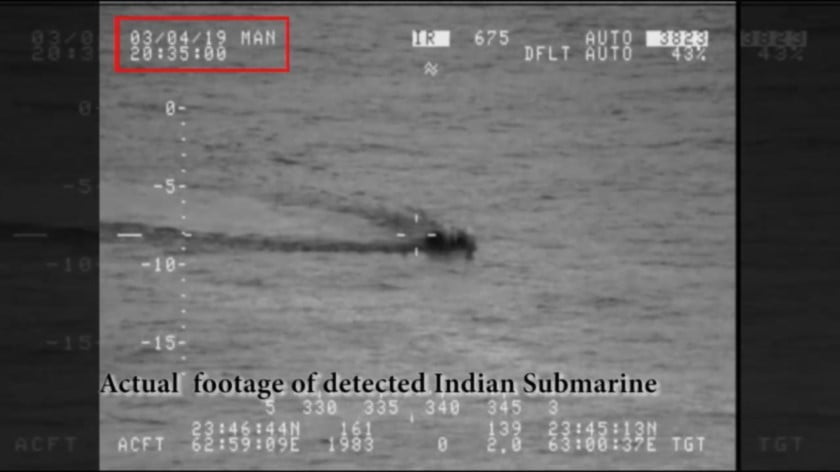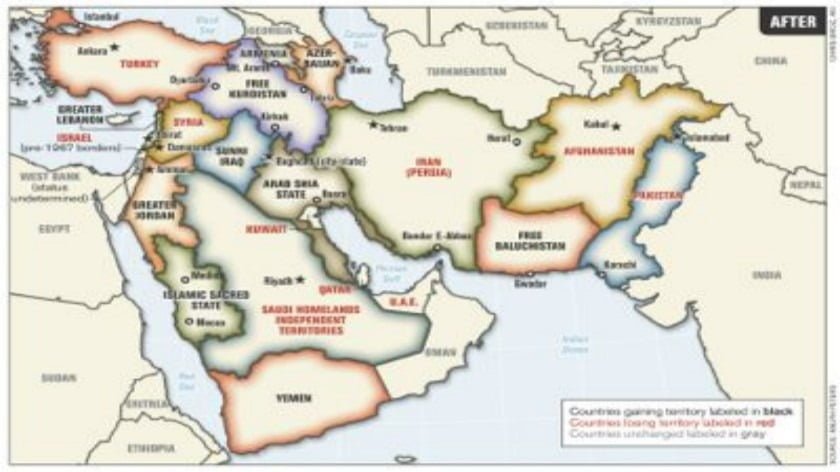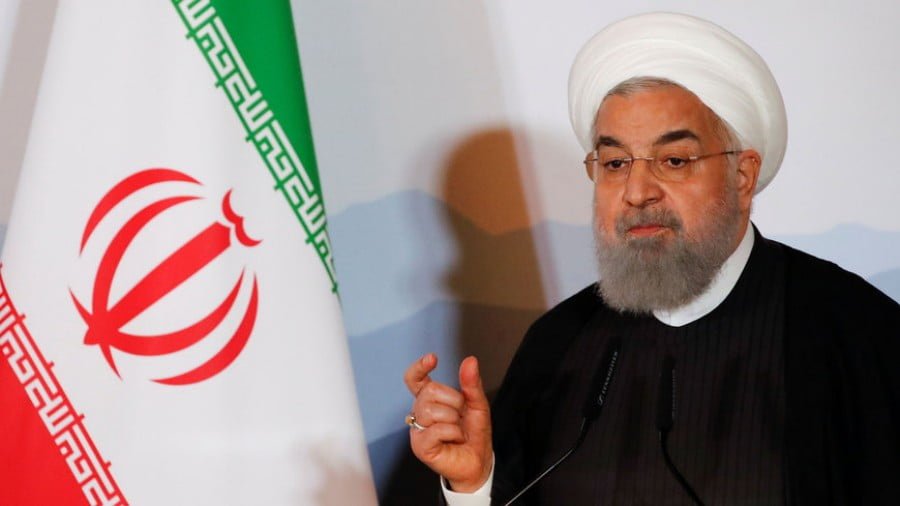Pakistan’s Indian Sub Interception Proves the Importance of the Country’s Navy
The Pakistan Navy proved its importance on Tuesday by intercepting an Indian submarine that attempted to infiltrate the country’s sovereign waters, highlighting the increasing role that this often overlooked branch of the Armed Forces is poised to play in the coming future as CPEC expands along the southern maritime vector to facilitate Chinese-African trade via the global pivot state.
Indian Infiltration Thwarted
The Pakistan Navy (PN) proved its highly skilled competence on Tuesday by detecting and deterring an Indian submarine that attempted to infiltrate the country’s sovereign waters, with this interception occurring in spite of New Delhi investing an order of magnitude more into this branch of the Armed Forces than Islamabad does. That in and of itself confirms that cost and quantity comparisons between these two rival militaries are misleading and don’t account for the differing quality of service between them, which was seen most clearly last week when the Pakistan Air Force – which also receives less funding than its Indian counterpart – shot down an intruding jet over its airspace and even managed to capture its pilot. That event understandably received a lot more international attention because of how dramatic it was, but the world also shouldn’t overlook the latest maritime tension between the two, nor the growing importance of the PN in general.
Introducing The Pakistan Navy
The popular Pakistani online media outlet Global Village Space (GVS) dedicated the February 2019 issue of its in-print magazine to precisely this topic and included insightful pieces by prominent figures such as Chief of Naval Staff Admiral Zafar M. Abbasi, Cdr (retd) Azam Khan, Vice Admiral (R) Taj M. Khattak, Rear Admiral (R) Pervaiz Asghar, and Minister for Maritime Affairs Ali Zaidi, as well as a detailed description by Strategic Affairs Editor Shahid Raza of the assets being acquired or developed for the PN. GVS released digital versions of all of these articles so that the wider audience outside of Pakistan can be informed about the latest developments concerning the country’s navy, with the following pieces being specifically recommended if readers are eager to learn more about this branch of the Armed Forces:
* “Pakistan’s Vision for Maritime Security”
* “Chief of the Naval Staff Admiral Zafar M Abbasi explains his vision for Pakistan Navy”
* “Worldwide Maritime Awakening: Where does Pakistan Stand?”
* “Importance of Aman Exercises – 2019 and Beyond”
* “Rethinking our oceans: Investing in The Blue Economy”
* “How to make Pakistan a Maritime Nation: Minister Ali Zaidi”
* “Pakistan Navy’s Blue Water Ambitions”
The abovementioned interviews, analyses, and articles revealed that the Pakistani economy is disproportionately dependent on maritime trade for a whopping 90% of its activity, which explains why the government decided to refocus on the maritime sector in late 2017 when it renamed and subsequently reconceptualized the Ministry of Ports and Shipping as the Ministry of Maritime Affairs. This preceded the launching of the Regional Maritime Security Patrols (RMSP) in summer 2018, after which the country’s first-ever Maritime Doctrine of Pakistan was unveiled at the end of the year. Amidst all of this, the PN carried out six biennial multilateral exercises called AMAN (which means peace in Urdu) from 2007-2019 that progressively saw more countries participating in these trust-building and interoperability drills, which proved that Islamabad isn’t “isolated” despite New Delhi refusing to allow it to join the “Indian Ocean Rim Association”.
S-CPEC+
Building off of the insights and outlooks gleaned from GVS’ pieces on the subject, it’s possible to identify the basic principles of Pakistan’s forward-looking naval strategy in the 21st century. The author previously described the country as the global pivot state because of the unparalleled pan-hemispheric integrational potential that it has due to the possibility of expanding CPEC along several geographic vectors all across Afro-Eurasia. The most pertinent one is what could be described as S-CPEC+, or the southern expansion of CPEC across the “Indian Ocean” (reconceptualized by the author as the Afro-Asian Ocean [AAO] to make it more civilizationally and strategically accurate) to facilitate African-Chinese trade via Pakistan, ergo the growing relevance of the PN. It’s with this frontier in mind that the country launched its RMSP to establish a presence in that region.
The author elaborated on these interconnected concepts more in detail in the following three pieces:
* “Pakistan’s ASGA Strategy For The Afro-Pacific”
* “Sudan Is Indispensable To China’s Silk Road Vision For Africa”
* “Pakistan’s Regional Maritime Security Patrols Are An Extension Of CPEC”
The main point is that Pakistan must urgently “Pivot to Africa”, with the PN leading the way.
Pakistan’s “Pivot To Africa”
From these analyses and the previously cited ones, the following policymaking points can be made:
* The PN is expanding from a coastal defense force to a blue water navy;
* It’ll defend the planned offshore Russian pipeline and S-CPEC+’s Sea Lines Of Communication (SLOC);
* The RMSP will make the PN one of the main state-to-state points of contact with African countries;
* This must eventually be leveraged to economic ends to improve Pakistani-African trade;
* Bilateral state-to-state navy-driven regional ties can evolve to become multilateral and non-military;
* AMAN is a useful military platform that can be expanded into a Chinese-backed economic one;
* The People’s Republic has plenty of experience building parallel institutions around BRI;
* The same strategy can be applied with S-CPEC+ to replace the Indian-led IORA;
* The RMSP form the transregional security vanguard of S-CPEC+ and require multilateral support;
* Coalition-building can preemptively thwart any possible Indian “blockade” scenario;
* The Pakistan Navy can therefore position itself as one of the leading forces in S-CPEC+ and the AAO;
* In order to be complete, however, Pakistan must have a complementary continental strategy;
* The February 2019 African-centric edition of Pakistan Politico can point experts in the right direction;
* But a comprehensive African policy must be created with military, economic, and academic input.
Concluding Thoughts
The Pakistan Navy’s thwarting of an Indian submarine’s infiltration attempt into the country’s sovereign waters brought global attention to this often overlooked branch of its military, which is long overdue because of its growing geostrategic significance as the vanguard force leading Pakistan’s “Pivot to Africa” and securing S-CPEC+. The impressive role that the Pakistan Navy is tasked by strategic inertia with playing makes it a very attractive partner for a plethora of countries, including most interestingly Russia, which the author touched upon in the following two pieces on the topic:
* “Russia’s Naval Strategy In The Afro-Asian Ocean”
* “A Russian-Indian LEMOA Could Lead To Logistics Pacts With Other Littoral States”
It’s therefore foreseeable that the Russian-Pakistani Strategic Partnership might soon expand into this domain if Moscow decides to sell naval equipment to Islamabad and even jointly establish a presence astride some of the most important Sea Lines Of Communication in the Afro-Asian Ocean. It’s not just Russia, either, since any Great Power could theoretically follow the aforementioned template in partnering with the Pakistan Navy and strengthening their influence along S-CPEC+. With this in mind, the Pakistan Navy is finally gaining the global recognition it deserves, and at the perfect time too.
By Andrew Korybko
Source: Eurasia Future







